The Pantheon is noteworthy, among all surviving Roman temples, for its remarkably fine state of preservation. The Pantheon was once a pagan temple to all the gods. It had a Greek name. ‘Pan’ means ‘all’ and ‘theon’ means gods.
Built in 27 B.C. by Agrippa and restored by Domitian after the fire of 80 A.D., the Pantheon is the best preserved of all the monuments of ancient Rome. After it had again suffered damage, it was rebuilt in its present form by Hadrian in 130 A.D. The temple is composed of a pronaos leading to a large circular chamber covered by a cupola. In 609 Boniface IV consecrated it as a Christian church, dedicating it to the Virgin and the Martyrs with the name of Sancta Maria Ad Martyres.
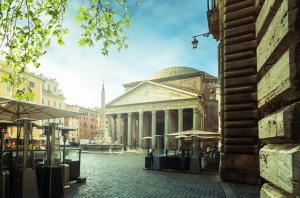
Pantheon in Rome, Italy. The Pantheon, probably the most famous building in European architectural history. This monument marks the end of the ancient history of the quarter, which was quite sparsely inhabited until the Middle Ages.
History of the Pantheon
The building was planned and erected by Marcus Vipsanius Agrippa, famous son-in-law of Augustus, to improve the new quarter of the city, known as the Campus Martius, with its splendid baths. As the inscription on the gable of the temple indicates, it dates from the years 27-25 B.C. But it is not certain, and in fact denied by many modern authorities, that even the portico is the one built by Agrippa. The temple proper, the rotunda, is certainly not the original one, because it was built in the period of the Emperor Hadrian, 120-125 A.D., as is clearly proved by the marks in the bricks, which date exactly from that period.

Agrippa’s Pantheon is the best preserved architectural work of ancient Rome and one of the tourist icons of the city
It would appear that the builder was really the Emperor Hadrian, who had a veritable passion for constructing imposing edificies; for example, his own mausoleum, now Castel S. Angelo;-the temple of Venus and Roma, the most magnificent of imperial times; the temple of Olympian Jove in Athens, which rivals the Parthenon, and the famous Villa of Hadrian near Tivoli. But, with his known modesty, he preferred to leave Agrippa’s inscription on the tympanum.
An inscription at the front entrance speaks of its dedication by Marcus Agrippa. The inscription is still legible, despite the damage that has ravaged the rest of the building. The inscription reads: M AGRIPPA L F COS TERTIUM FECIT. Translated, this can be read as “Marcus Agrippa, son of Lucius, having been consul three times made it.”
It was restored by Septimius Severus and Caracalla. Closed and abandoned under the first Christian emperors and pillaged by the barbarians.
On the 6th March 609 A.D., Boniface IV, with the permission of Byzantine Emperor Phocas, changed the pagan temple into a Christian church dedicating it to St. Mary of the Martyrs. It is to this fact we owe the preservation of the Pantheon.
It was consecrated by Boniface IV to Our Lady, Oueen of Martyrs. The anniversary of the consecration, May 13, was celebrated each year as a feast of all the martyrs, that is, of all saints. This feast was later transferred to November 1, as the Feast of All Saints. The bodies of many martyrs were removed from the Catacombs to be buried here.
Constans II, the Byzantine Emperor, took off the gilt bronze tiles in 667 A.D. from the roof and sent them to Constantinople.
Pope Benedict II restored it (684), To preserve the structure Gregory III (731-741) had the dome covered with lead and Anastasius IV built a palace beside it (1150).
When the popes resided in Avignon, the temple functioned as a fortress in the conflicts in between the competing Roman noble families of the Colonna and the Orsini. In 1435 Eugenius IV separated the church, and also after that it was the item of such admiration that a Roman legislator on taking workplace swore to protect ‘Maria Rotonda’ intact for the pontiff, along with the relics and also spiritual prizes of Rome.
Pantheon was significantly appreciated throughout the Renaissance. Pope Pius IV restored the old bronze door and had it almost modify (1563 ). The Barberini pope Urban VIII unwisely appointed Bernini to include 2 bell-towers ahead: nevertheless they looked so awkward that the Romans ridiculed them, calling them the ‘ass-ears of Bernini’ (they were just removed in 1883).
Pope Urban VIII of the Barberini family removed the bronze sheeting of the portico beams to build the cannons of Castel Sant’Angelo— inspiring the famous saying, ‘Quod non fecerunt barbari fecerunt Barberini’ (‘What the barbarians did not do, the Barberini did’).
Pope Alexander VII had actually the portico repaired in 1662 and decreased the level of the square to offer a much better sight of the front; Pope Clement IX bordered the portico with an iron barrier (1668 ); Pope Benedict XIV restored the inside and also the atrium.
Excavations made in 1875 led to the discovery of the two marble reliefs now in the vestibule, but these excavations had to be filled in as they interfered with street traffic. In 1885 the campanile of Urban VIII (1623- 1644) was removed. In recent years the Italian Government has cleared away the accumulated buildings which obscured the massive structure and since 1929 it has been a palatine basilica under the patronage of the head of the Italian state.
A Model Frequently Copied: London, Washington
The Pantheon is glorious, not only from the viewpoint of art and history, but even more because of its religious history. It has, of course, been the object of study as a pagan edifice, by reason of its marvelous architecture, which is justly considered superb. It has served as a model for many public buildings in various parts of the world.
Michelangelo intended to raise the Pantheon up to Heaven with the dome of St. Peter’s Basilica. It was the model, too, for St. Paul’s in London, as well as of the Capitol in Washington. That is why every visitor to Rome, no matter how limited his stay, never fails to visit this monument and to be deeply impressed by it.
to Read More click Next.

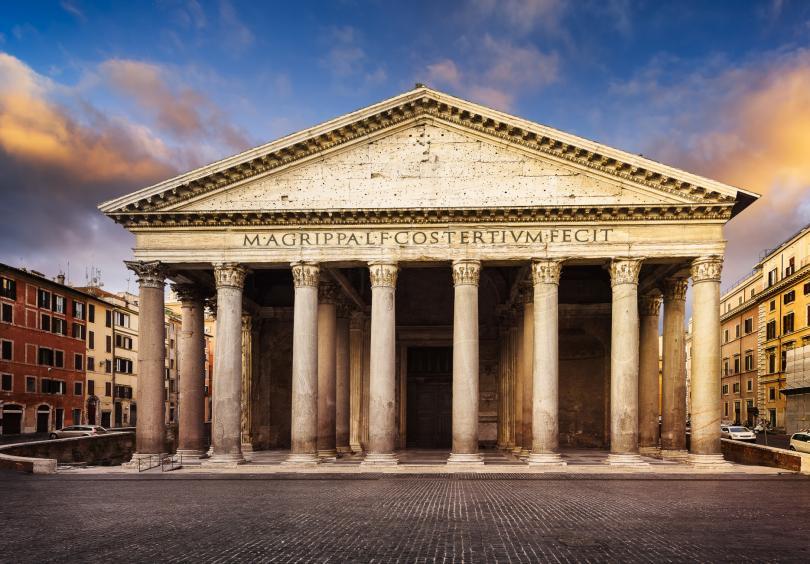
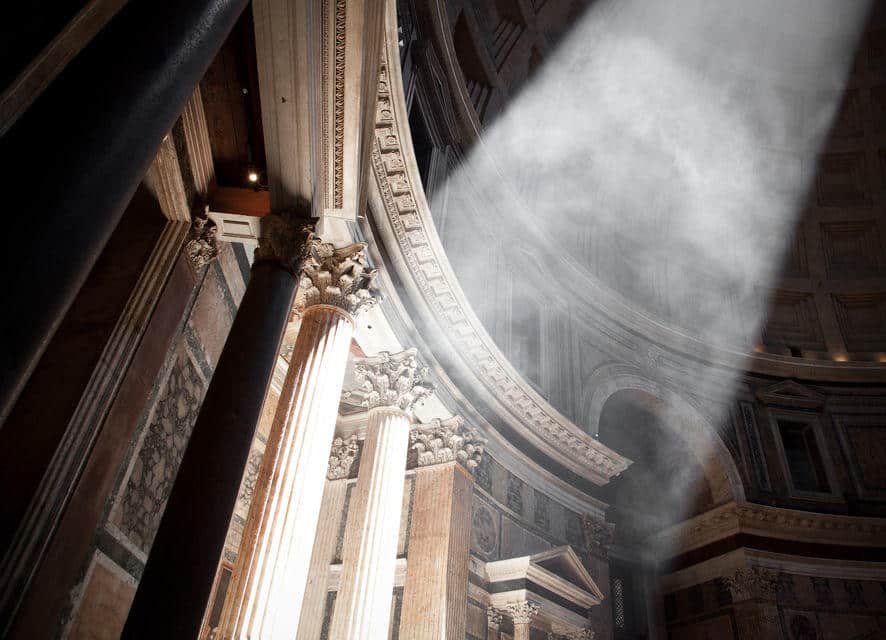
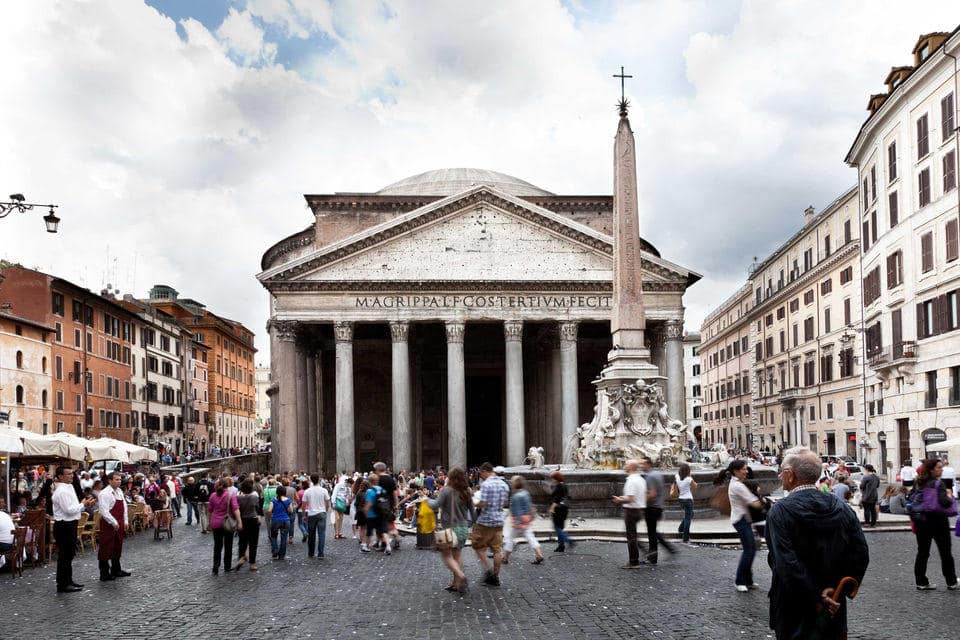
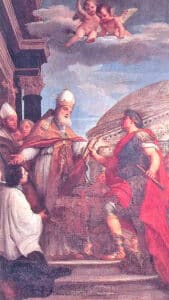
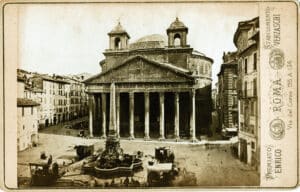




Leave a Comment